What Is Quality Content?
Quality content typically refers to content that is useful, accurate, reliable, and relevant to its intended audience. It is well-researched and thoughtfully produced to provide genuine value—the exact information or solutions that readers are seeking.
But how to measure content quality?
There’s no universal process to measure a content quality score. Each website, publisher, or platform has its own definition and standards for quality content.
From a brand’s perspective, content should:
- Align with your brand's voice and goals
- Reflect your brand’s identity and values
- Meet the specific needs and preferences of your target audience
- Drive engagement and conversions with compelling and persuasive messaging
- Enhance your brand’s reputation and authority within the industry
Now, let’s understand the meaning of high-quality content.
From Google’s point of view, quality content is helpful, reliable, and people-focused:
Google's automated ranking systems are designed to present helpful, reliable information that's primarily created to benefit people, not to gain search engine rankings, in the top search results.
So, quality content should:
- Satisfy user intent—provide the information or solution the user is seeking
- Provide original information, research, or analysis
- Reflect the creator’s expertise and first-hand experience on the subject
- Be relevant and comprehensive enough to answer users’ questions effectively
- Offer substantial value compared to other pages
- Have a good page experience (e.g., page loading speed, readability, mobile experience)
In short:
Google’s focus is to provide genuine value to searchers.
To be prioritized by Google, your content must help users achieve their objectives. While ensuring a positive and safe online experience.
Taking a holistic view, your content must meet three sets of objectives. Your brand’s, Google’s, and the users’.
Why Is Quality Content Important?
Quality content helps your business in many ways. It can:
- Improve your SEO rankings: Google prioritizes helpful, original content that addresses the reader’s search intent. That’s why creating high-quality content is key from an SEO perspective.
- Strengthen your brand: Good content improves your brand reputation, adds to conversations, and helps you to be seen as an industry expert
- Generate high-quality leads: With content, you can educate your audience and generate high-quality leads that are closer to becoming paying customers
- Increase conversion: Content is a great way to introduce users to your product or service. And guide them until they become customers.
- Reduce churn: High-quality content improves the customer experience. It facilitates onboarding and helps your customers get the most out of your products.
- Engage users: Good content keeps people coming back. It’s key for businesses looking to generate more returning visitors, like media sites.
Bear in mind, though:
There isn’t a one-size-fits-all approach to creating good content.
Each business and industry has specific needs. So, you’ll need to customize your strategy.
However, high-quality content pieces do share some traits. Let’s explore these traits. And learn how to create high-quality content.
10 Tips to Create High-Quality Content
1. Start with Extensive Research
To create high-quality content, you should have a deep understanding of the topic.
For that, you must research the topic thoroughly. That way, your content can reflect a depth and breadth of knowledge. And stand out from superficial articles online.
In-depth research helps you:
- Ensure your content is accurate. A poorly researched piece with errors will quickly lose your audience's trust.
- Identify gaps in existing content. And add value for your readers by filling those gaps.
- Source data and facts to add credibility and authority to your content
- Create unique examples or new angles on existing topics
Use these sources to research your topic:
- Search engines (Google, Bing, etc.): Start with broad search terms related to your topic to get an overview (e.g., “meditation”). Move to more specific queries as you narrow your focus (e.g., “how to do transcendental meditation”).
- Industry reports: Identify reputable websites and publications relevant to your niche. Check for white papers, research reports, case studies, and in-depth articles. Sources like Statista, McKinsey, and Deloitte offer original research data and the latest industry trends.
- Academic journals: These are excellent for in-depth studies and the latest research. Platforms like Google Scholar or JSTOR provide access to peer-reviewed articles.
- Books: Read books (or ebooks). It’ll give you a well-rounded perspective on your topic.
- Subject matter experts: Interview industry experts to get practical tips. And unique perspectives from their experience.
- YouTube: Watch expert videos on your topic
- Online forums: Ask your topic-related questions and join discussions in forums like Quora and Reddit
2. Address Your Customers’ Needs
High-quality content addresses needs and solves customers’ problems.
In order for your content to do this, you must understand your audience, their problems, and the questions they ask.
These three customer aspects are essential:
- Their motivations: Their final goals. What they want to achieve.
- Their pain points: The problems they experience
- Their preferred channels and platforms: Where they like to consume information and spend time online. Like LinkedIn, blog posts, newsletters, etc.
With this information, you can define your buyer personas—in-depth customer profiles.
Which can look like this:
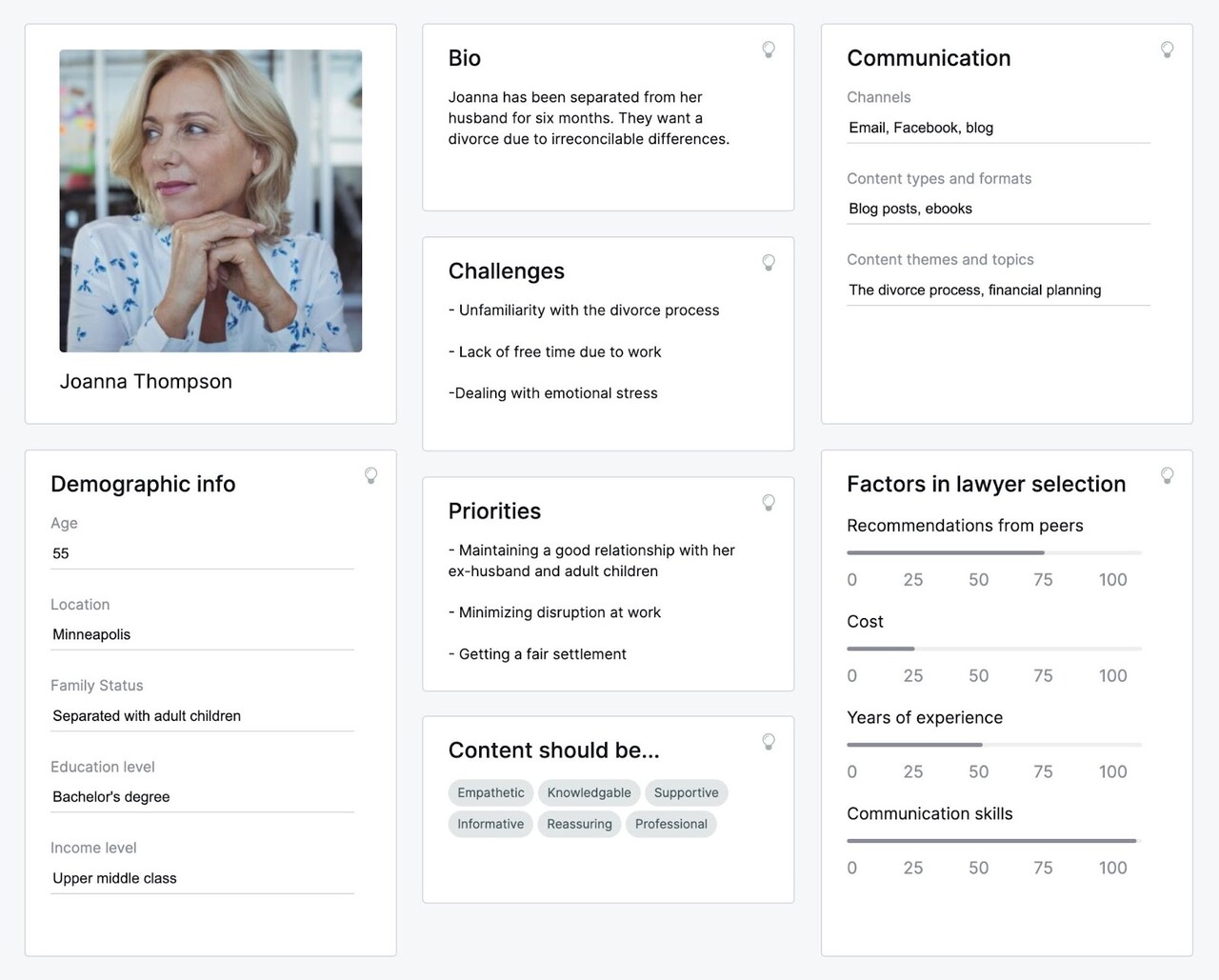
This is key to choosing what topics your content will cover. And where you’ll post.
(Don’t worry: We’ll explain more about performing audience research in the next section.)
Understanding Search Intent
We can’t talk about addressing customers’ needs without first explaining search intent.
Search intent is the underlying goal behind a search query.
It can be divided into four types: informational, navigational, commercial, and transactional.
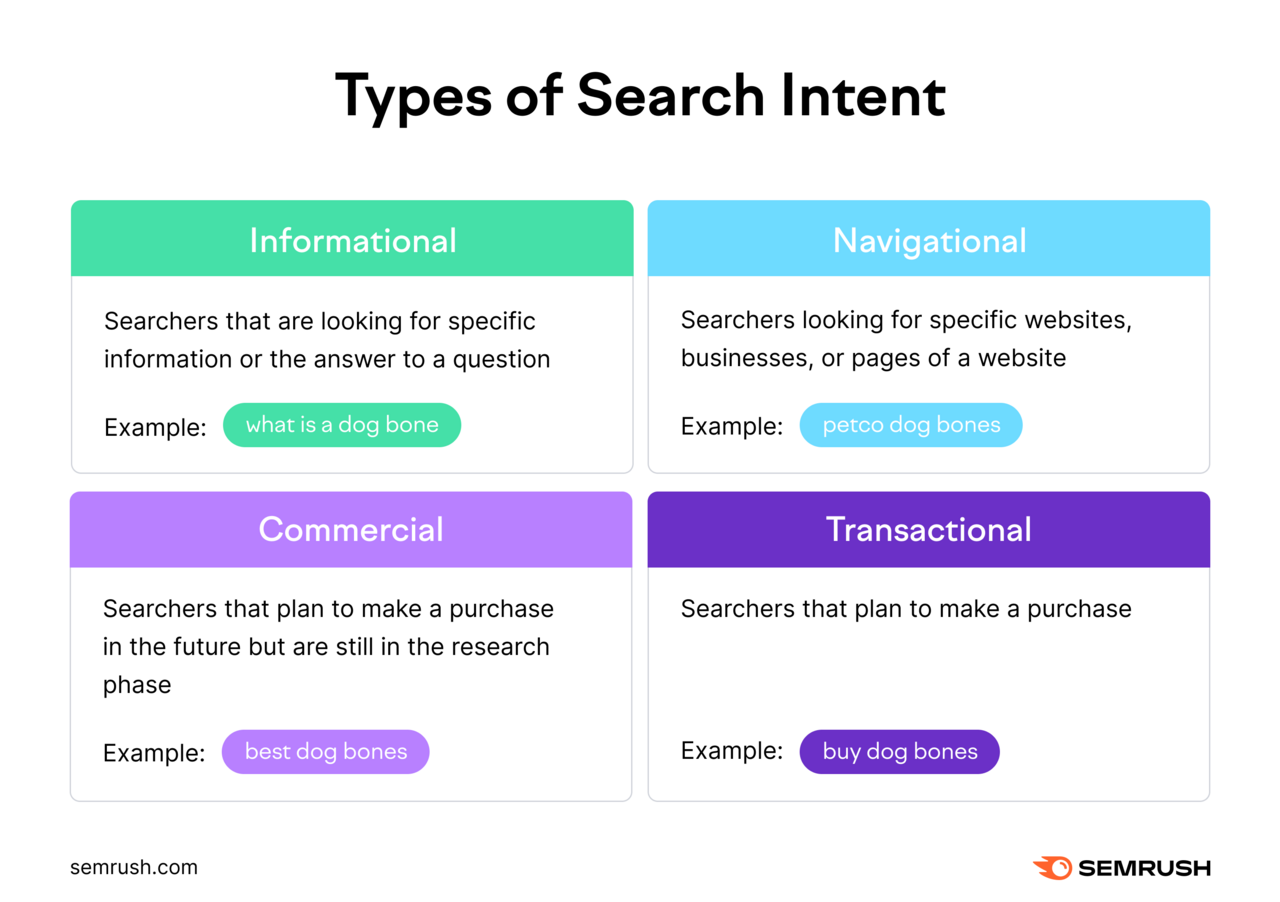
Take a keyword like “best email marketing tools.”
Say someone types it into Google. That user probably expects to find a list of email marketing tools, with their features, prices, and other relevant information.
Satisfying search intent means understanding what the user really wants. And creating content that delivers just that.
No unnecessary sections, no fluff.
Understanding search intent is key to creating blog posts that rank well in Google.
It’s also important if you’re creating YouTube videos, podcasts, or any kind of content that can be found using a search bar. That’s because platforms like YouTube and Spotify will always prioritize high-quality content that gives users what they’re looking for.
Further reading: Learn more about search intent in What Is Search Intent? A Complete Guide. And find out how Semrush can help you identify the intent behind a particular keyword.
Performing Audience Research
To perform audience research, collect information from your own company and external sources.
This is an ongoing process.
Let’s analyze how to perform audience research, step by step.
Step 1: Make Use of Your Team’s Expertise
Most businesses have in-house experts who can share knowledge that will help you create customer-first content.
Reach out to folks in customer service, sales, and so on. Anyone who regularly talks to customers. They can share common customer questions, concerns, and frustrations.
For example, say you own a Spanish language school in Barcelona. You could talk to teachers, a colleague at the front desk—basically, anyone who has a direct relationship with the school’s patrons.
You’ll get ideas for your content.
For example, you may learn prospective students at the school often ask:
- How long does it take to reach an intermediate Spanish level?
- What are some formal and informal ways to say “Thank you” in Spanish?
- How is your language school different from an online language school?
Any of those topics would work perfectly as a blog post, an Instagram post, or even a newsletter topic.
Further reading: Digital Content Creation: What It Is and How to Excel at It
Step 2: Ask Your Customers
The most useful way to understand what content your customers would find valuable? Ask them.
Of course, a one-on-one conversation is the best way to get nuanced replies. However, these conversations take time and resources.
Interview a larger sample size with less effort by sending a survey. Use free survey tools. Like Google Forms or Typeform.
Remember:
Keep it easy for your customers. Ask as few questions as possible. And make the questions simple.
Let’s revisit the language school example. You could ask:
- What are the biggest problems you face when learning Spanish?
- And your biggest problems as an expat living in Barcelona?
- How do you prefer to consume content? (Blog posts, videos, social media posts, podcasts, etc.)
Questions like these will help you find topics and define the best formats for your content strategy.
Step 3: Research the Market and Your Competitors
Look for relevant topics in your industry and analyze your competitors.
Semrush’s Topic Research tool is a great place to start.
You can go to the tool, add a broad topic, and click “Get content ideas.”
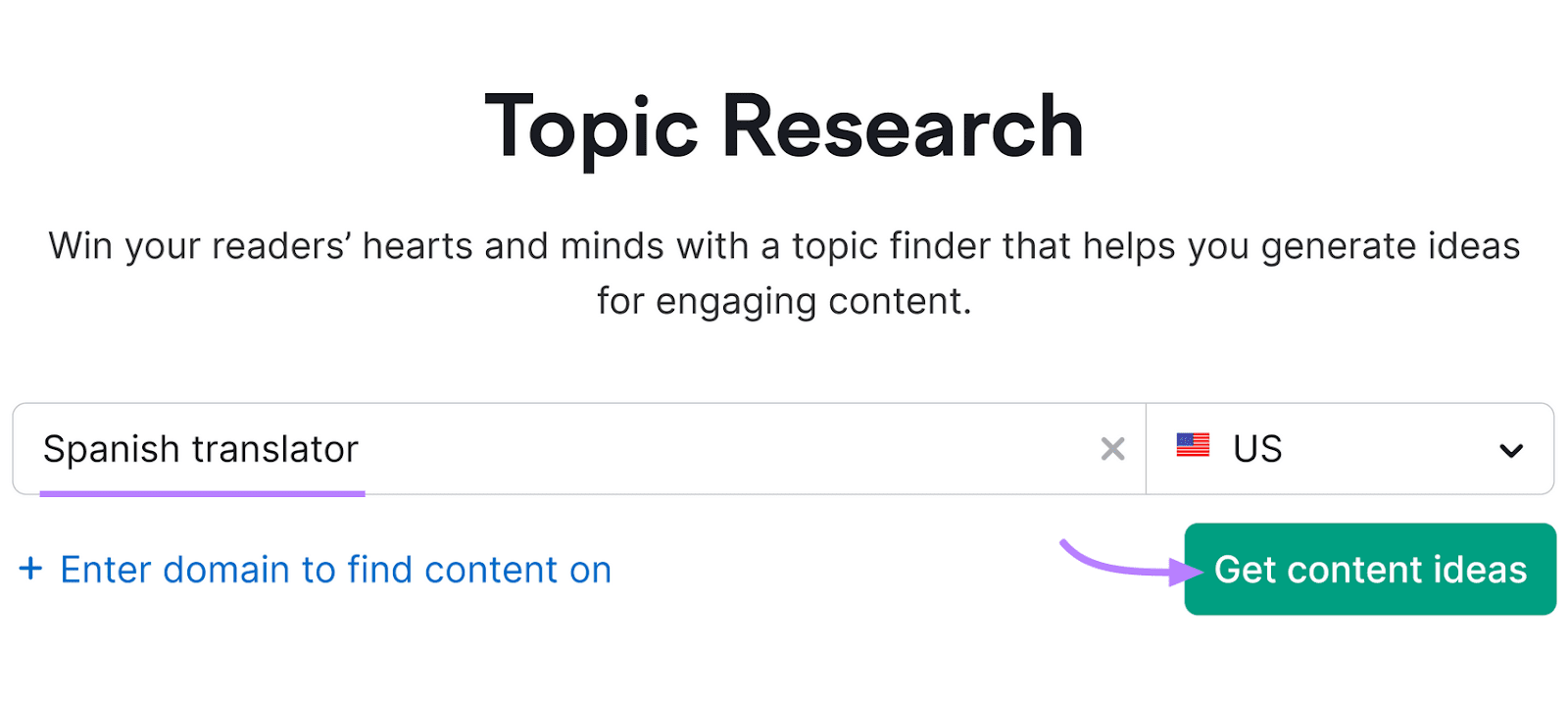
The tool will generate a list of related topics:
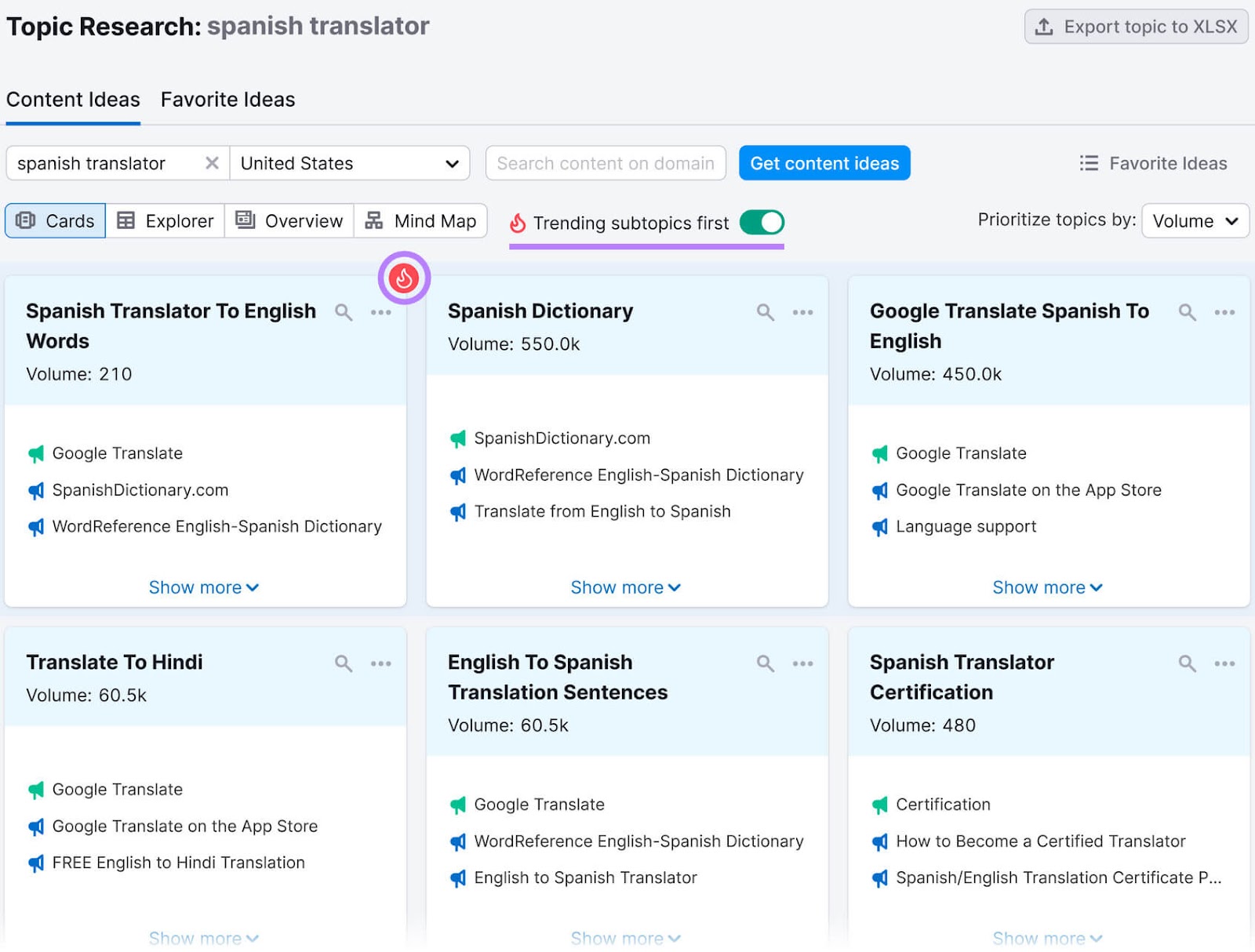
Click on a card to see the following information:
- How many times per month users look for that keyword on Google (“Subtopic Volume”)
- Headlines of related articles
- Related questions
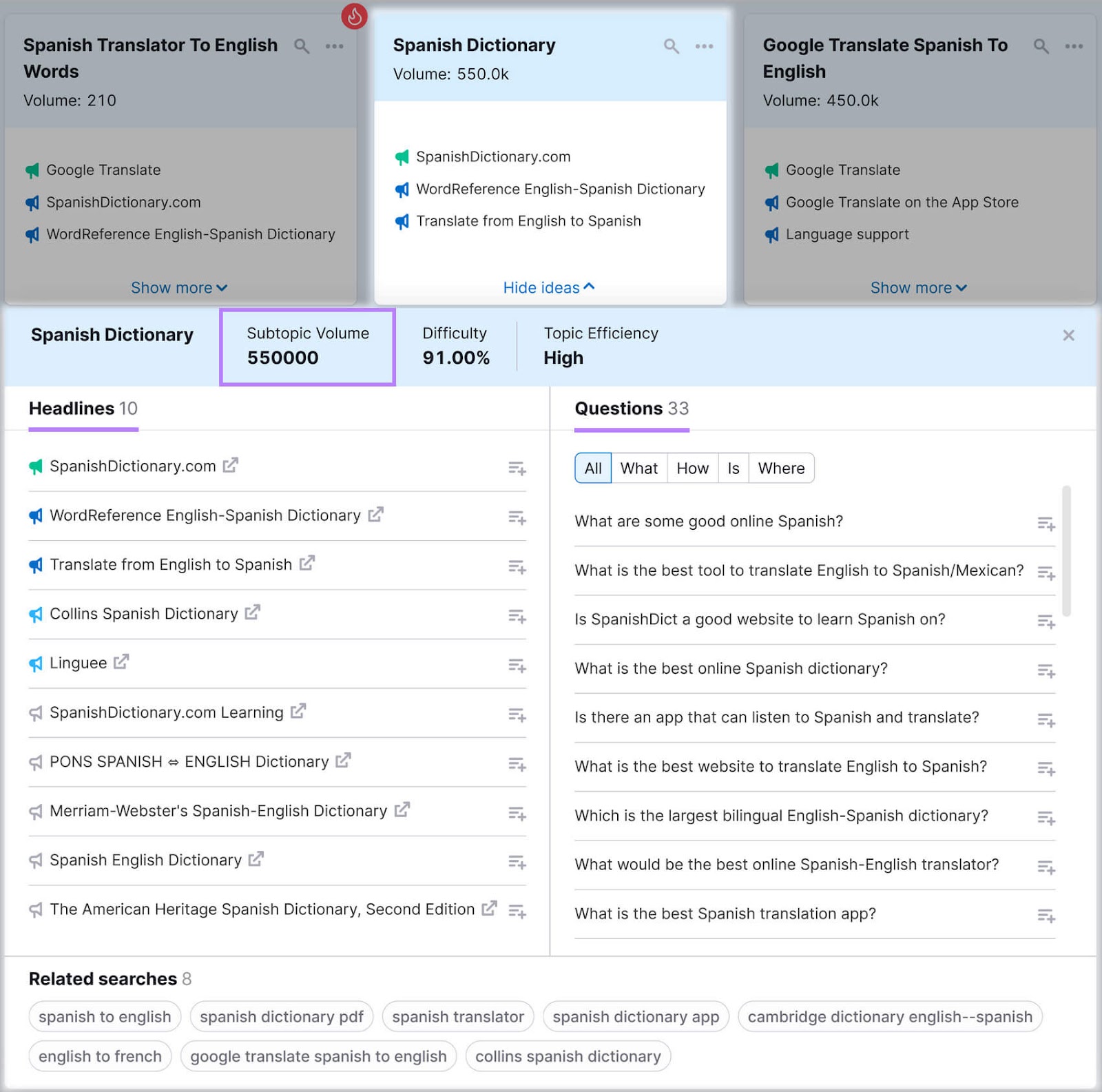
Semrush collects these results by analyzing pages ranking on Google. That means you can see what topics people are actively searching for.
Use these ideas as starting points for creating content across a variety of formats, like social posts, newsletters, or podcasts.
If you’re looking for more ways to research the market and your competitors, try these Semrush tools:
- Organic Research: See the keywords your competitors rank for on Google
- Keyword Gap: Find the keywords your competitors are missing
- Social Tracker: Track your competitors’ social media activity
3. Focus on ‘Information Gain’
The concept of “information gain score” aims to measure how much new and unique information a piece of content provides to a user. How much is beyond what they’ve already seen in other search results on the same topic.
Google introduced this concept based on a patent application published in 2020.
Here’s a snippet of how a machine learning algorithm could determine information gain score, based on the patent:
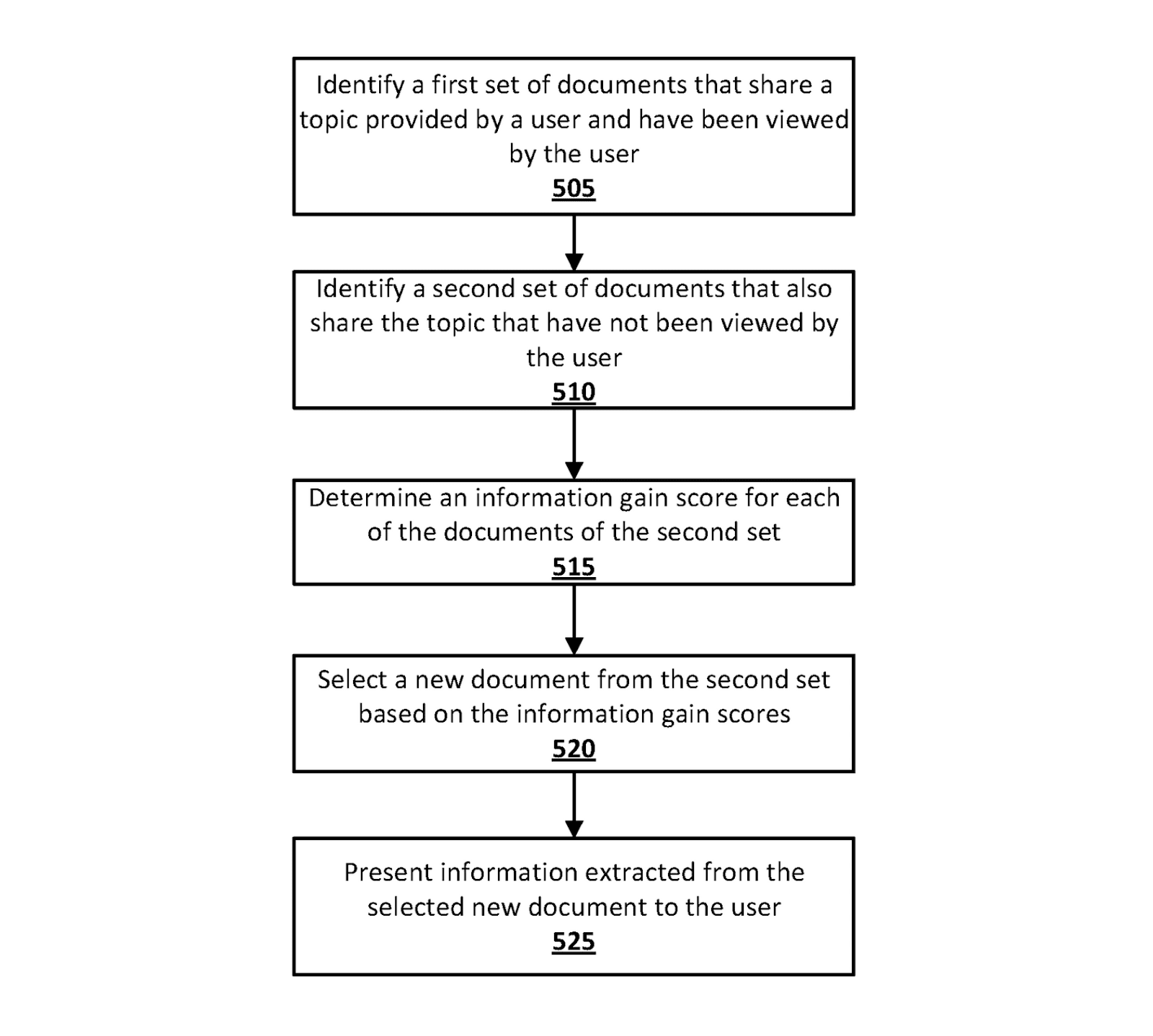
Image Source: Google Patents
This means:
Google now has a method and a metric for quantifying the uniqueness of content for a given search query. And ranking the results accordingly.
(Although the actual application of this method in the search engine was unclear at the time of publication.)
How can you make your content unique?
- Share a unique angle. Use an unexplored angle to discuss a common topic.
- Share expert insights. Speak to industry experts. Feature their insights in your content.
- Share original data. Publish the results of your primary research, surveys, or case studies.
Primary research—also known as original research—requires time and resources. But it’s a surefire way to create original, unique, and value-driven content.
Here’s an example:
We studied the digital advertising activity of 956 domains from 13 different industries for our Advertising Trends study.
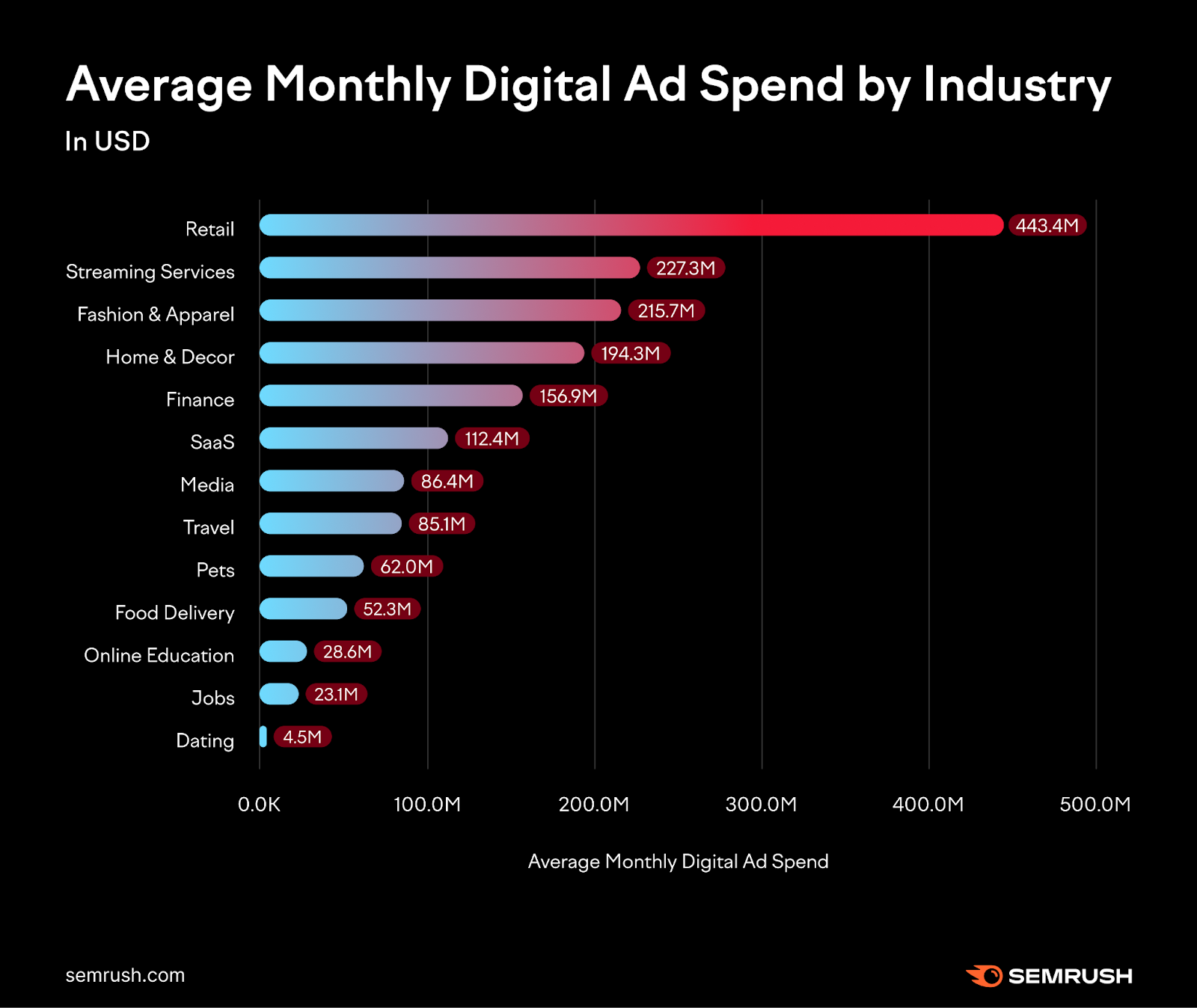
Besides higher rankings, this type of content is also likely to earn more backlinks. And social shares.
4. Showcase Your Expertise
In many cases, content is high quality because it is created by (or with the insights of) subject matter experts.
Having someone with real experience on the topic at hand adds depth and trustworthiness to your content.
It’s common to find (lower-quality) content pieces created by people with no real experience in the topic. They read articles or watch videos about the subject. Then they create something that is merely a combination of what’s already out there.
No added value, no originality.
By involving subject matter experts in your content creation process, you differentiate yourself from the overwhelming amount of content published every day.
To do this, you have two options:
- Finding subject matter experts who can “transform” their knowledge into good content pieces
- Interviewing subject matter experts and creating good content with their insights
It can be difficult to find people who are experts in a particular area and good communicators. That’s why, most of the time, you’ll find that the second option is easier.
(Of course, in many cases, you’ll be the subject matter expert! Or someone in your company.)
Finding subject matter experts is especially important if you’re creating content for SEO (like blog posts).
Why?
Because of E-E-A-T (previously known as E-A-T).
E-E-A-T is a term Google uses that stands for Experience, Expertise, Authoritativeness, and Trust.
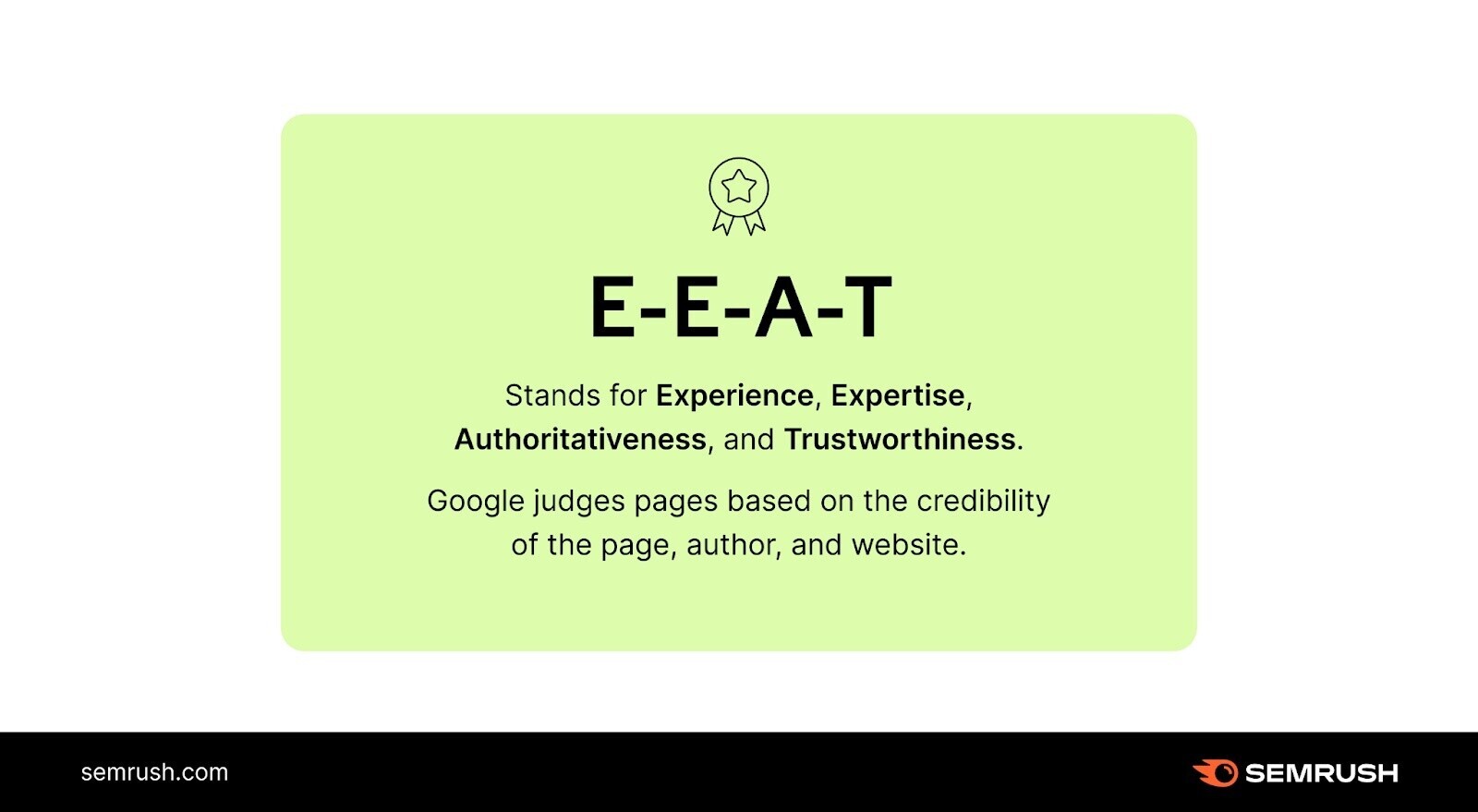
These four elements are part of Google’s Search Quality Rater Guidelines.
E-E-A-T is not an official ranking factor, but it’s important from an SEO perspective.
To identify content that follows E-E-A-T guidelines, Google wants to consider aspects like:
- Content quality
- Author
- Source credibility
- Quality of backlinks
E-E-A-T is especially important if you create content about YMYL (your money or your life) topics.
These are topics that, if explained wrong, can negatively impact a person’s life. Healthcare and finance are two good examples.
Does E-E-A-T only impact SEO content? Yes and no.
Let us explain:
E-E-A-T is a Google principle. But you can use Google’s general guidelines to create high-quality content on other platforms.
Say you own a flower shop. You want to create an Instagram Reel sharing tips to keep a flower bouquet fresh.
Instagram doesn’t have E-E-A-T guidelines.
However, the underlying idea still applies: Users want original content created by subject matter experts.
You could put together a list of basic, uninspired tips taken from Google. Or you could use your own expertise to create insightful, valuable, unique content. It will take more time, but it will differentiate your content from everyone else’s.
Further reading: If you want to learn more about E-E-A-T and YMYL, check out our article: What Are E-E-A-T and YMYL in SEO & How to Optimize for Them.
5. Answer Frequently Asked Questions
Frequently asked questions (FAQs) allow you to provide a better reading experience. By anticipating the topic-related questions users might have. And instantly answering them in content.
That way, readers don’t have to look for answers elsewhere.
Besides being helpful to users, FAQs help increase your content’s search visibility.
For question-based queries, Google often shares answers from FAQs as a “featured snippet.” Which looks like this:
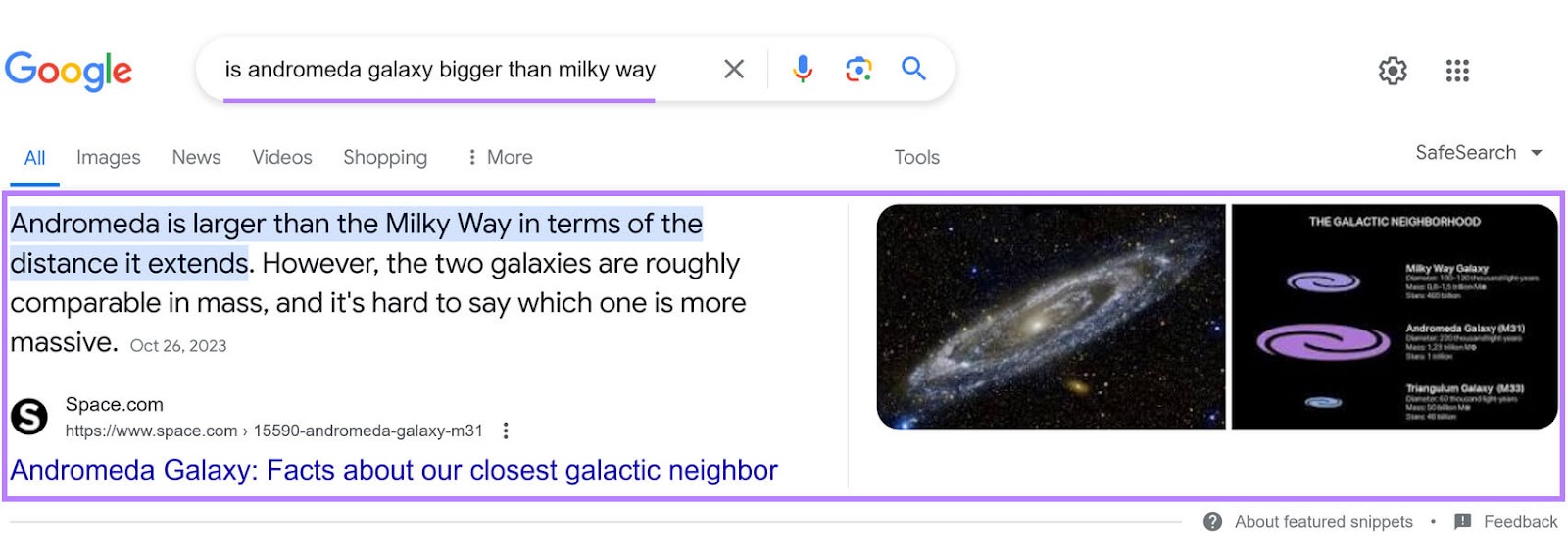
Google also shares answers in the People Also Ask (PAA) box.
Like this:
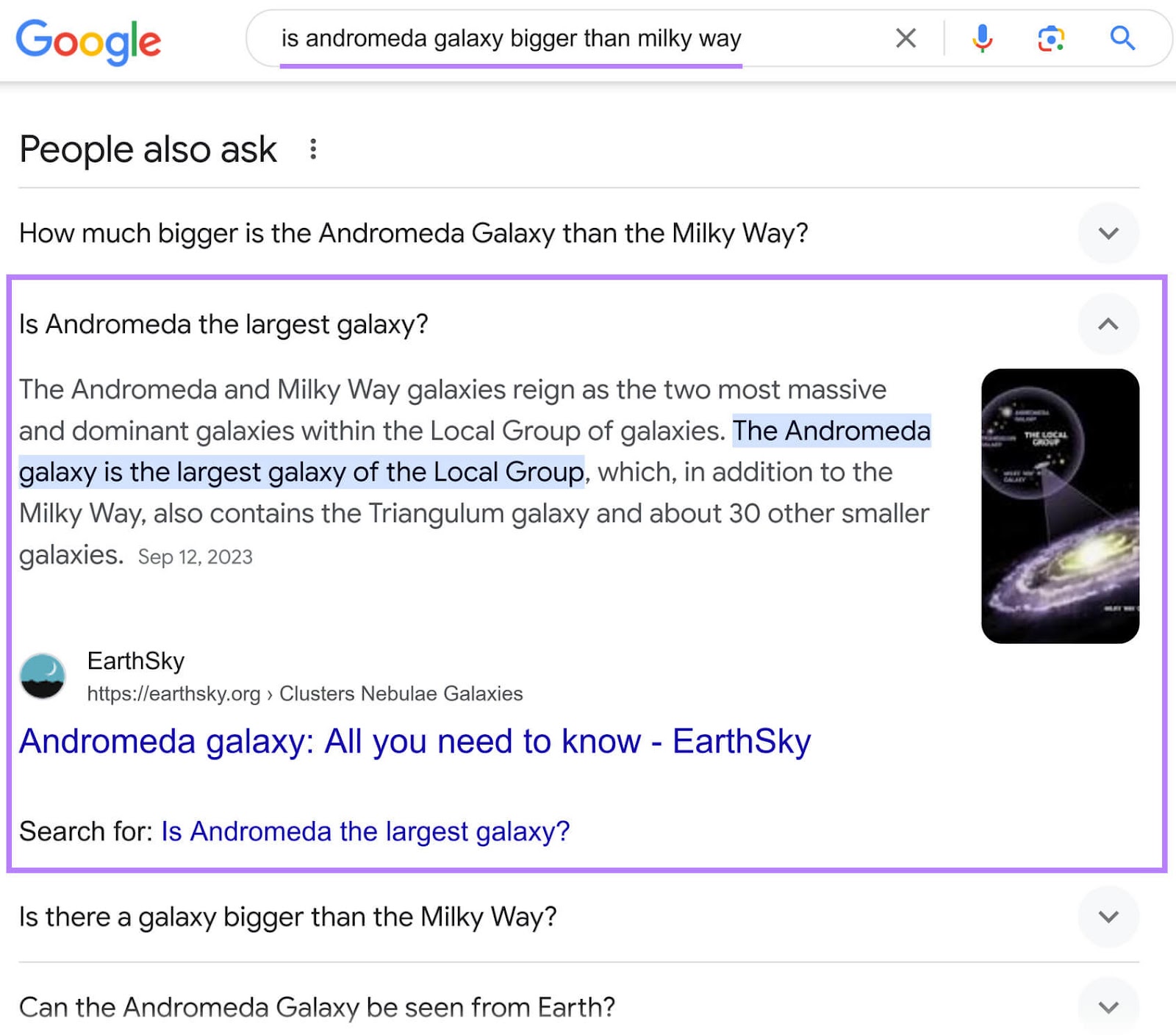
Having your answers feature in snippets or PAA boxes amplifies your content’s reach. And can drive additional traffic to your site.
So, how do you identify the right FAQs for your content?
- Check the topic-related questions in the PAA box. As you saw in the above example.
- Ask customer service and sales teams about the questions they hear most often
- Use a keyword tool to find question-related keyword opportunities
To discover question-based keywords using Semrush’s Keyword Magic Tool, enter a keyword into the text field, select a country in the drop-down, and click the “Search” button.
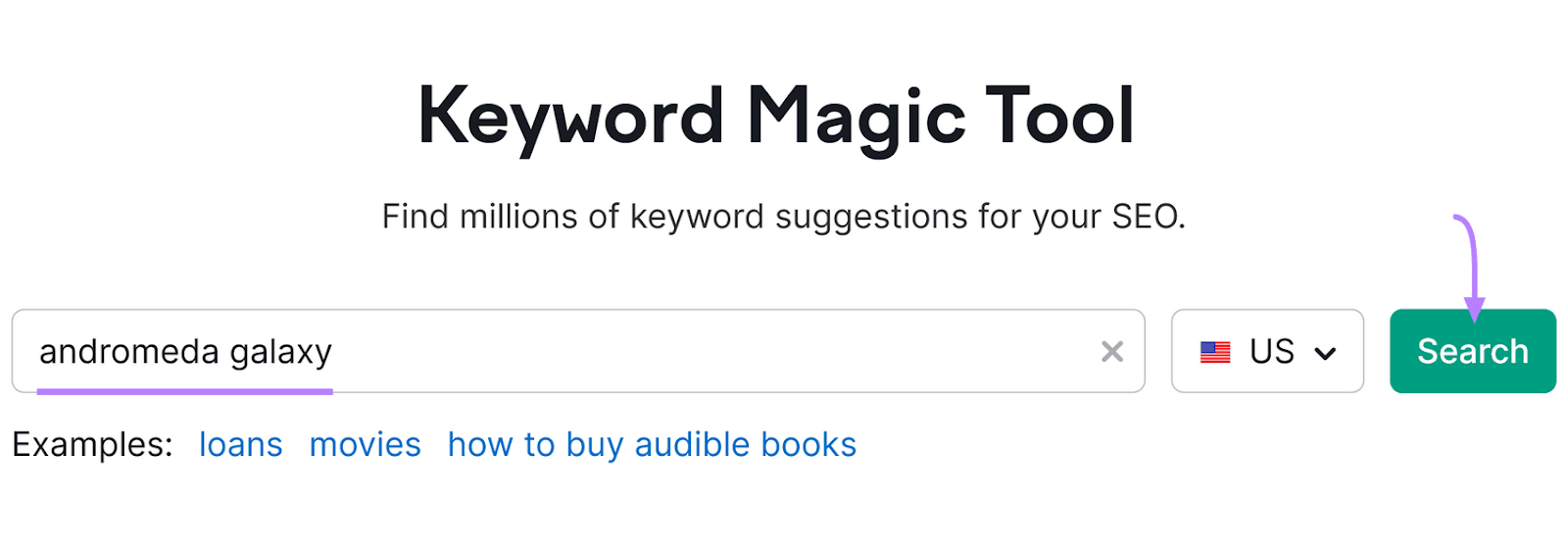
You’ll see a list of keywords related to your target keyword.
Like this:
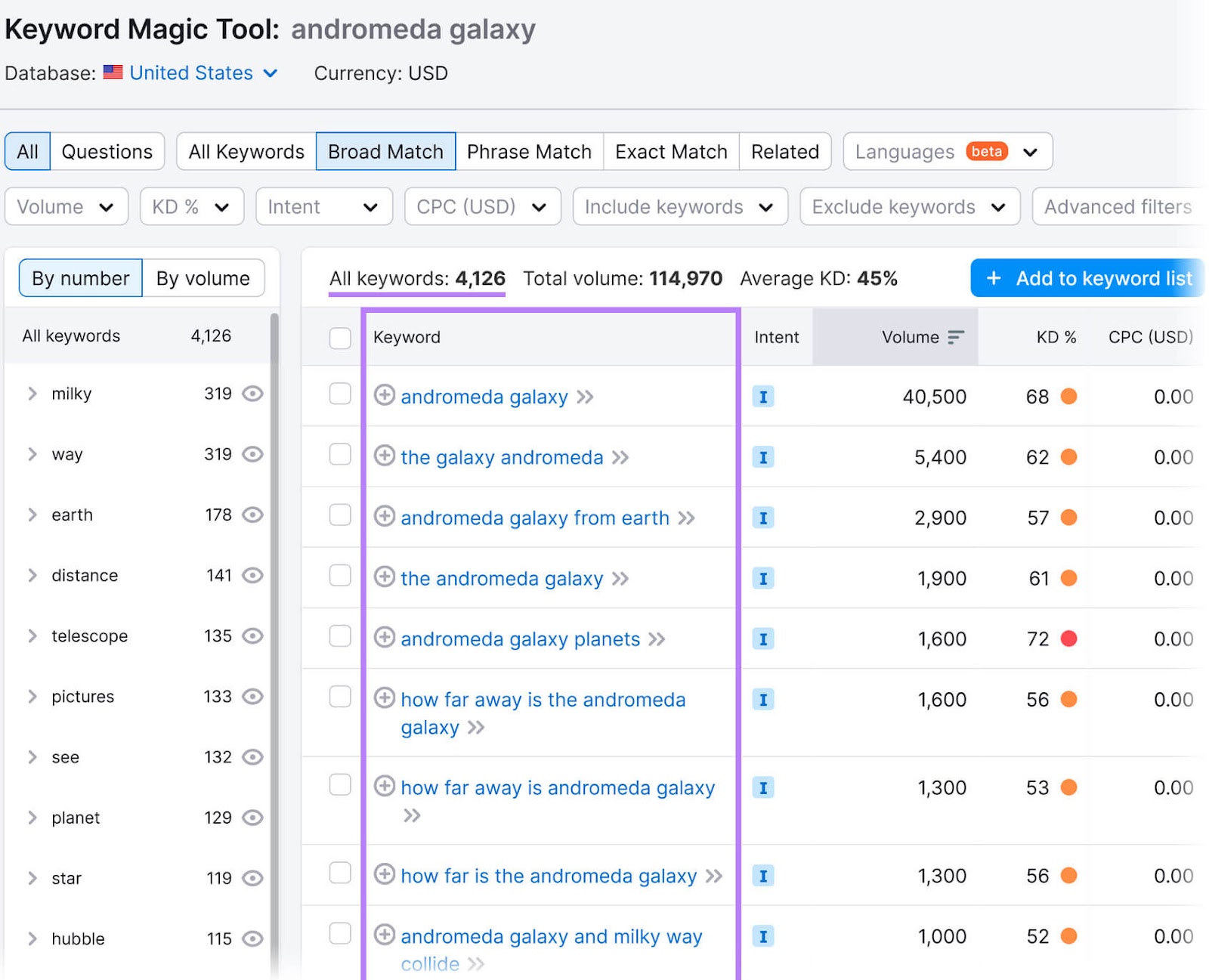
Next, click the “Questions” tab at the top-left corner. This filters for question keywords.
Now you’ll have a list of questions along with search volume (estimated number of monthly searches for a query). And keyword difficulty (KD)—level of competition to rank for a specific query.
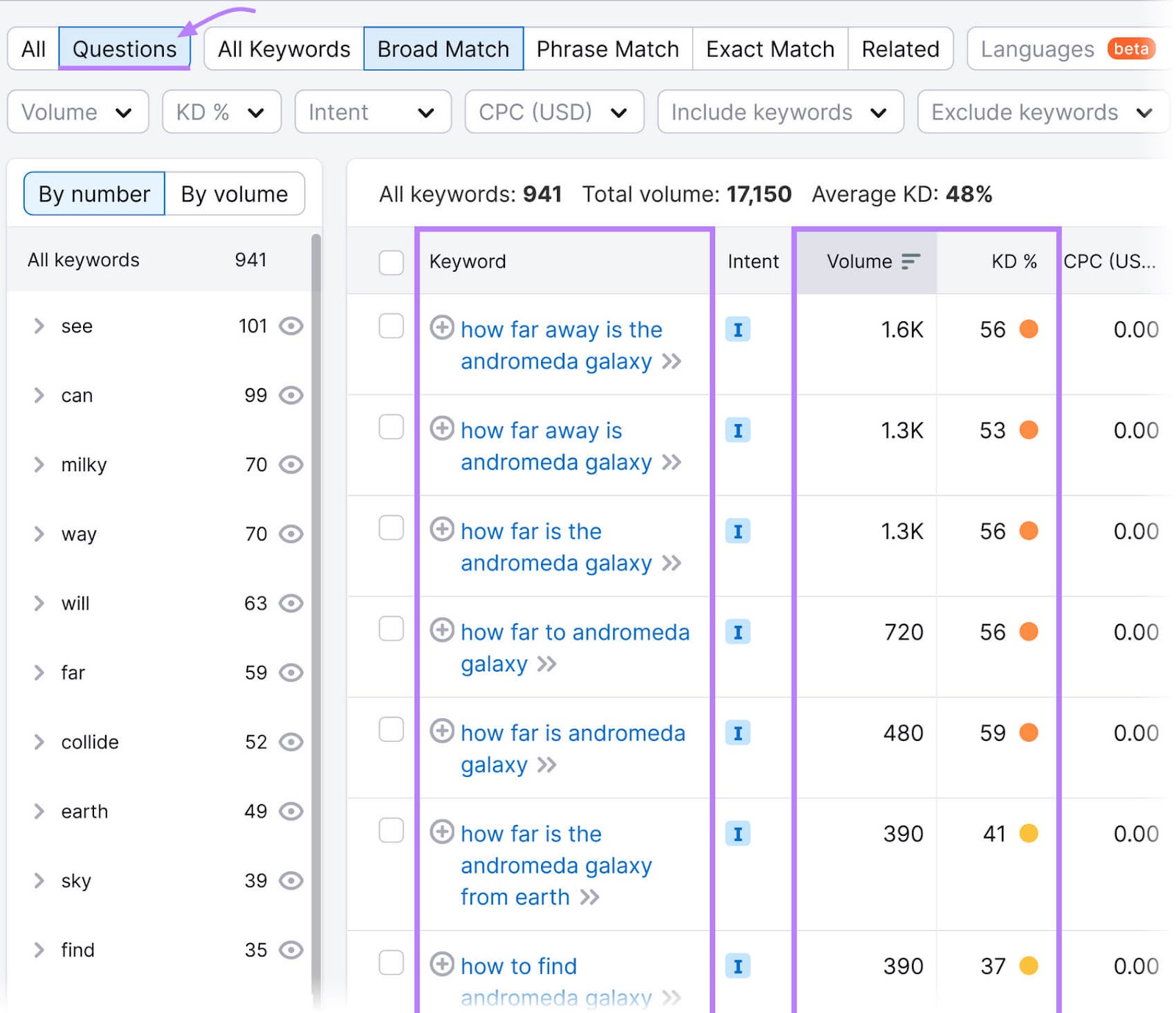
Pick four to five most relevant questions that you haven’t covered in your existing content. Answer them thoroughly in an FAQs section.
Further reading: 6 Examples of FAQ Pages and How to Write a Great One
6. Add Plenty of Examples
Using plenty of examples throughout your content makes it useful, actionable, and relatable.
Here’s why it’s super important to explain concepts with examples. It:
- Improves understanding: Examples make a complex or abstract topic easier for your audience to follow. So they can understand the concept and take action.
- Enhances relatability: When you share real-world applications or scenarios, your audience can relate them to their lives. It’s a great value addition. Readers like to come back to content they can relate to.
- Boosts engagement: Examples can make content (especially business content) more interesting. And less monotonous. You can engage readers. And make them stay longer on your site.
Here’s a good example from our blog post on marketing plans. The author has explained a concept (Marketing Plan vs. Marketing Strategy vs. Business Plan) with a table.
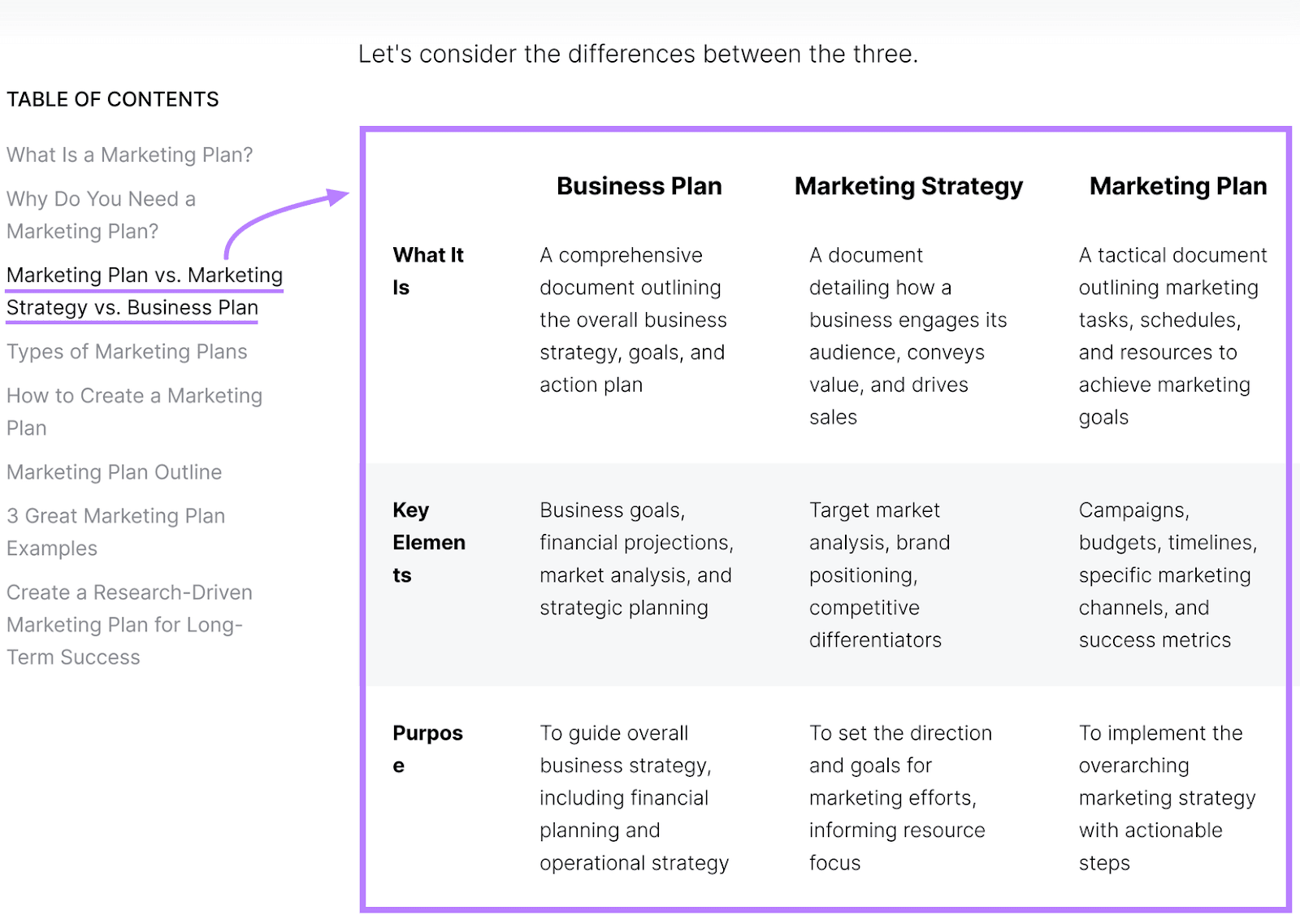
It’s possible that not all readers will grasp the differences based on the information in the table.
So the author also explained the concept with a hypothetical business case. To make it easy to follow for readers.
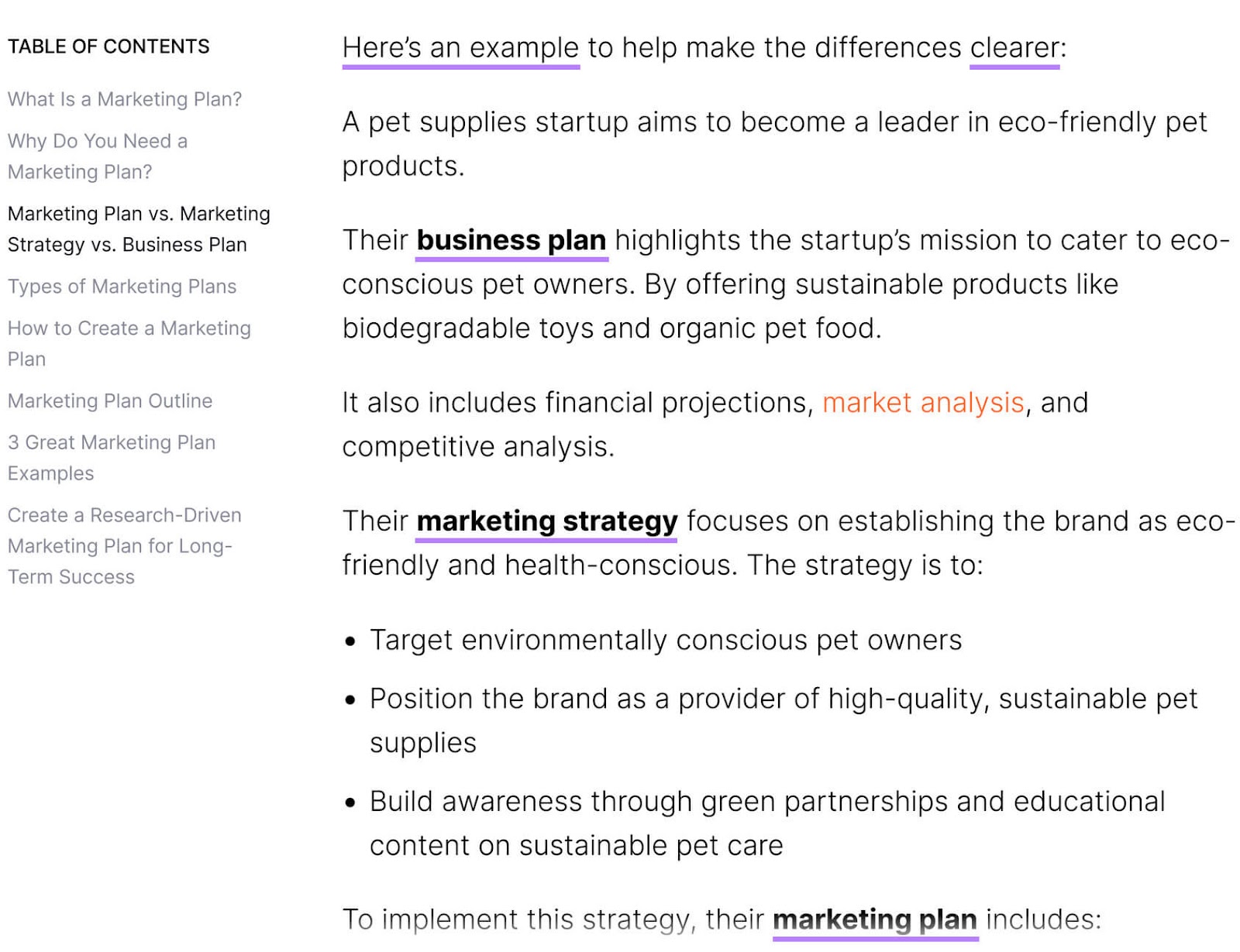
Follow these best practices to make your examples effective:
- Use diverse examples. Include a variety of examples that cater to different segments of your audience. This helps your content resonate with a wider audience.
- Be specific and detailed. Detailed examples are more effective than generic ones. They provide depth to your arguments. And make your content more authoritative.
- Strike a balance. Use a mix of real-world and hypothetical examples. This approach provides both clarity and practical application.
7. Make It Easy to Read
If you’re creating text-based content (like blog posts, ebooks, or social media posts), content readability is key to engaging users.
Here are some ideas to improve content readability:
- Write short sentences. Whenever possible, divide long sentences into two or three shorter ones.
- Include one idea per paragraph. Use short, simple paragraphs.
- Add images. Use images to break up long sections to make it easier for readers to stay engaged.
- Use lists. When possible, use bulleted or numbered lists.
- Share relevant information first. Don’t force users to read your whole piece to find what they’re looking for.
See some of these tips at work in this LinkedIn post:
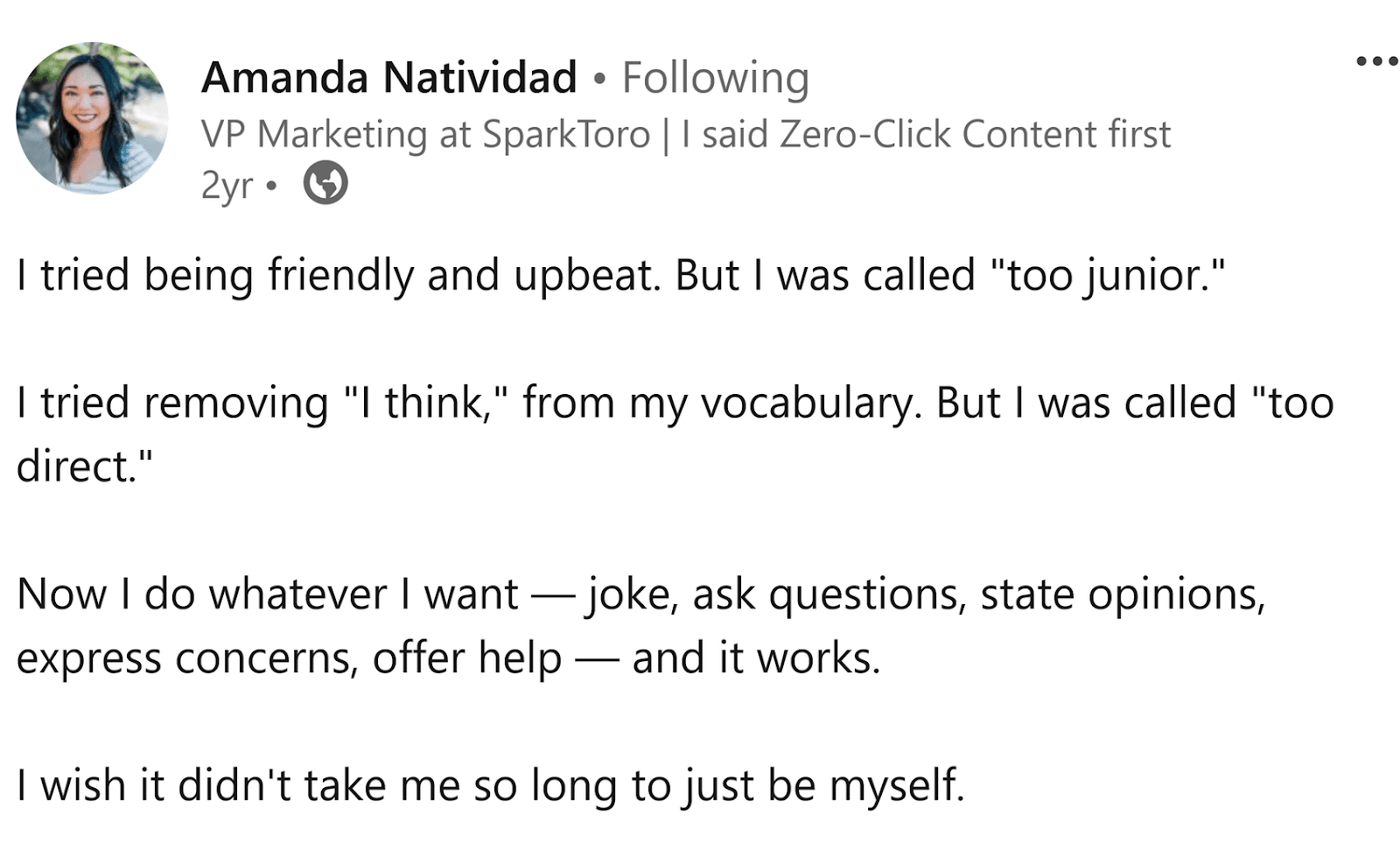
It has four simple paragraphs, one idea in each. No blocks of text, no fluff.
Looking for an example of a blog article that puts these tips into use? You’re reading it right now!
We work hard to make our articles as easy to read as possible.
If you also write blog posts, Semrush’s SEO Writing Assistant is a great tool to improve content readability. It scans your piece in real time and provides readability recommendations.
It will rank your text’s readability and recalculate your rating as you make changes.
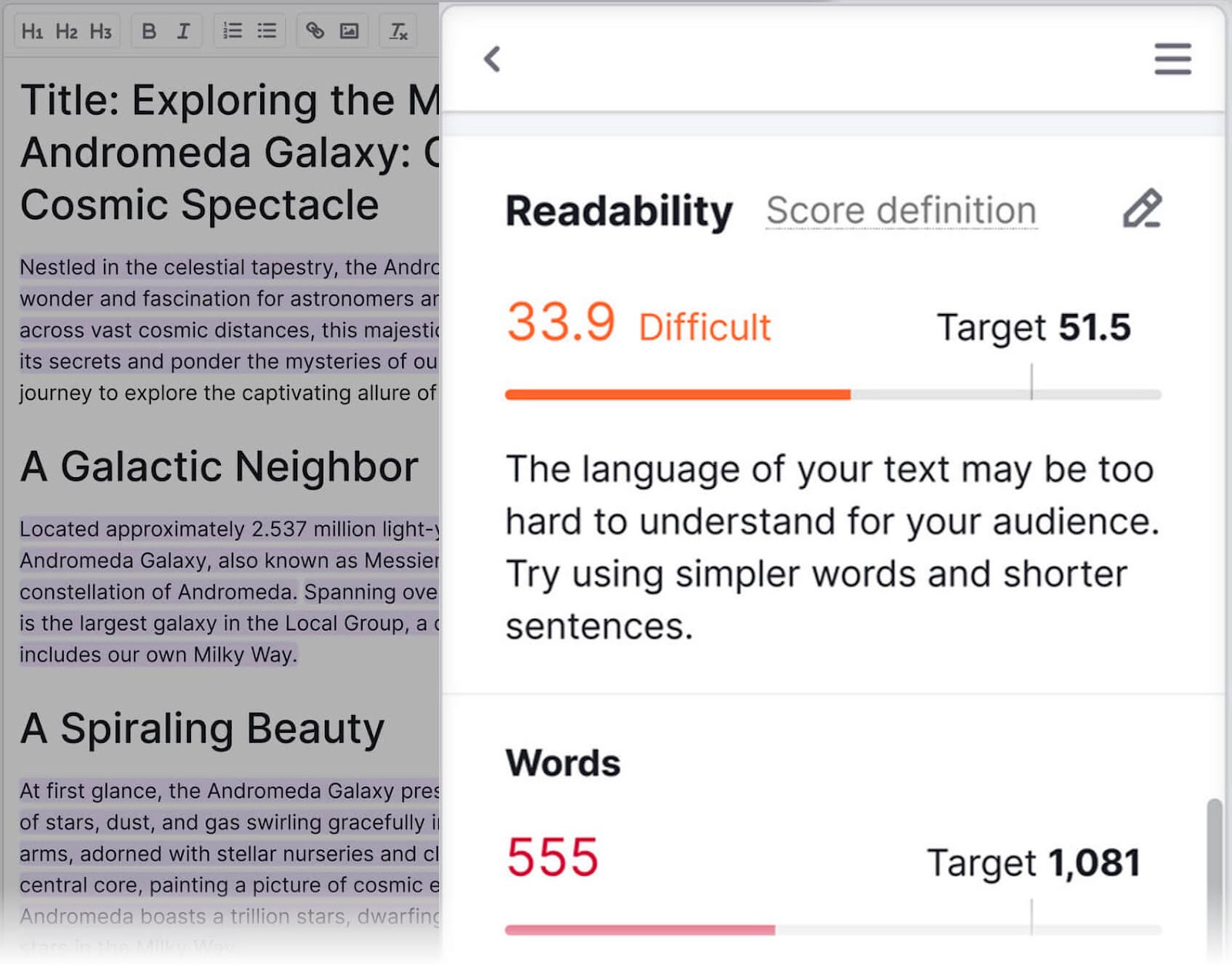
You can use the SEO Writing Assistant directly in the Semrush platform. Or use it in Google Docs, WordPress, or Microsoft Word.
Once the add-on is activated, just start writing the article, add your target keywords, and click “Get recommendations.”
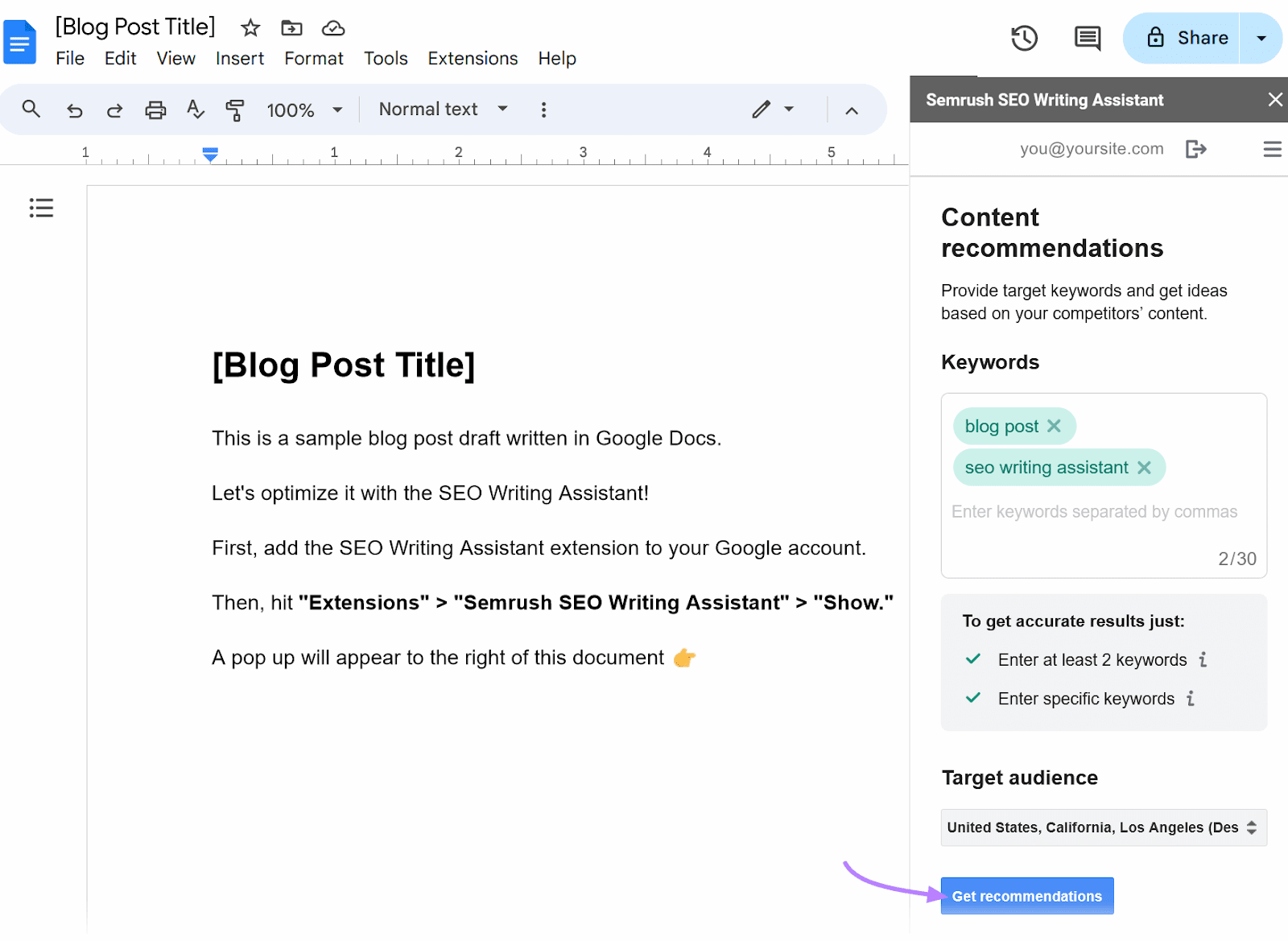
8. Use Visuals
Visuals—such as images, videos, and infographics—quickly capture readers’ attention. They also help users remember information more effectively than text-only content.
Besides, large blocks of text can overwhelm your readers.
Use visual breaks to make your content more readable and engaging.
Like this:
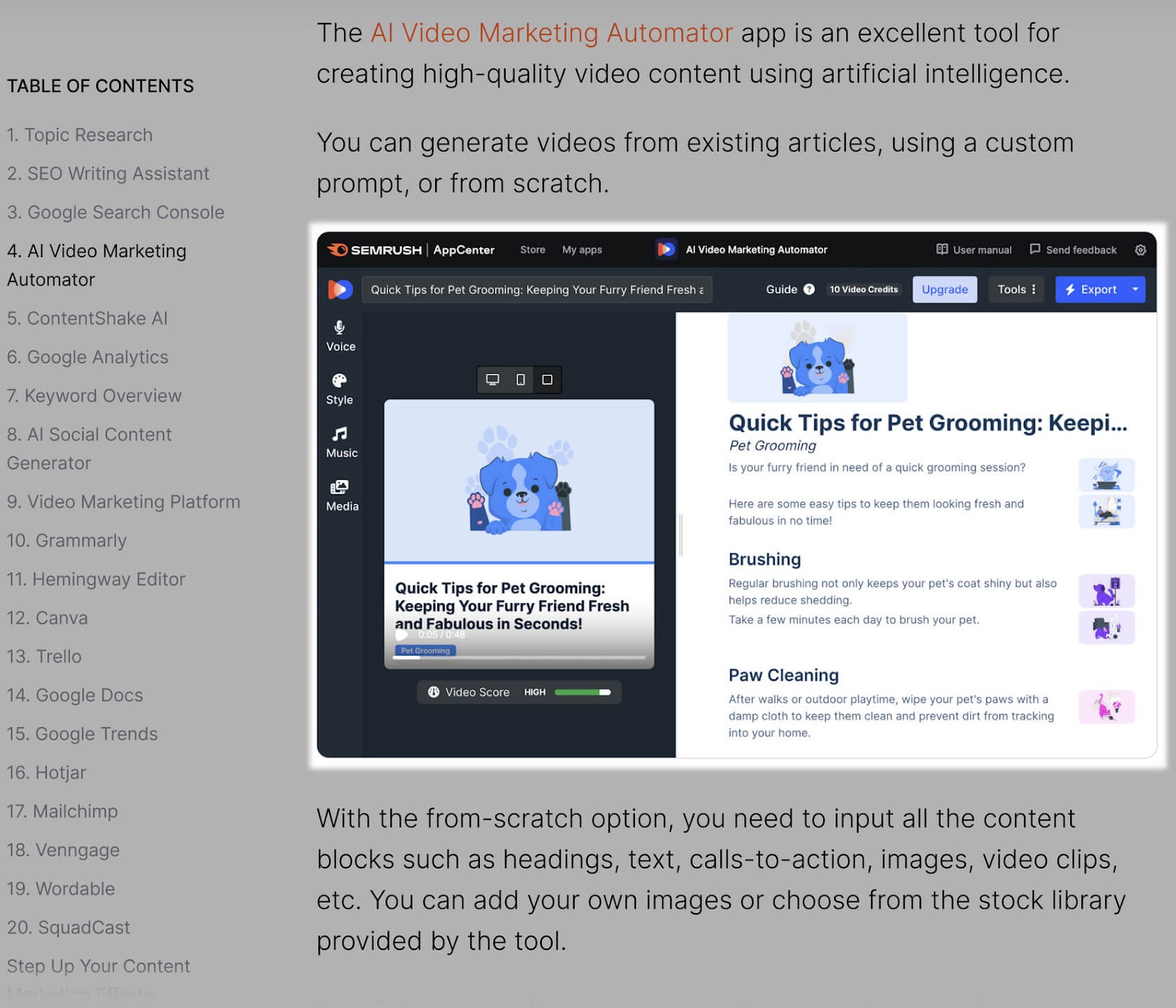
You can also use visuals to simplify complex ideas. Like charts, illustrations, or diagrams.
See how this illustration simplifies the concept of linking pillar and cluster pages?
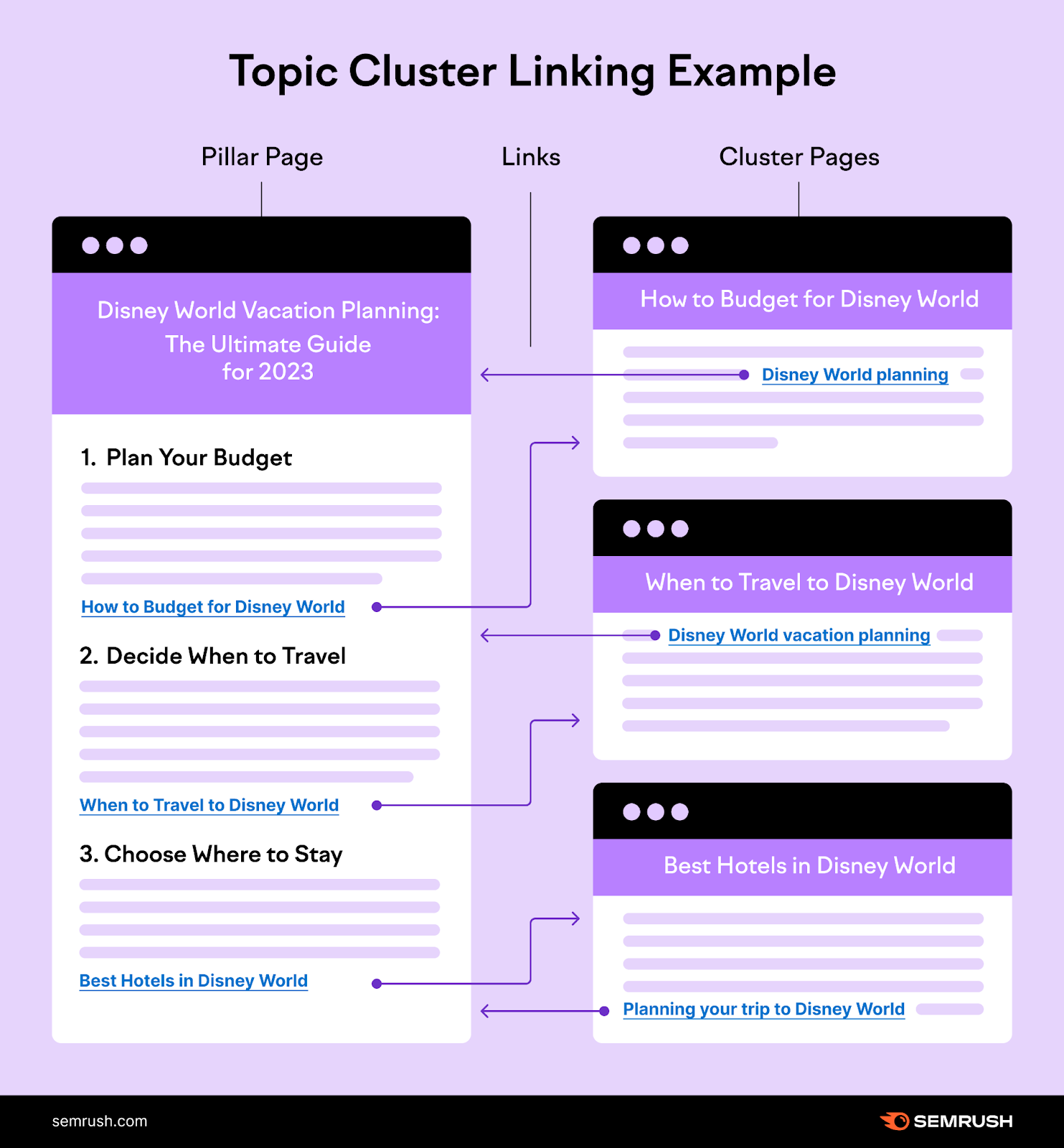
Follow these quick tips to effectively use visuals in your content:
- Make sure visuals are directly relevant to the surrounding text (and section)
- Don’t use images just for the aesthetics. Every visual must serve a purpose—illustrate a point, show an example, or break up text.
- Avoid generic or stock images
- Use screenshots to show step-by-step tutorials or workflows
- Insert visuals thoughtfully. Don’t force them where they don’t fit.
- Add alt text to describe visuals in detail. It’s helpful for screen readers and search engines.
9. Check for Grammar and Spelling Errors
Having grammar and spelling errors in your content negatively impacts its credibility. Which also affects your brand image.
Also, it interrupts readers’ flow. And shifts their focus from the main message to errors.
So proofread your work. And correct the errors.
Use the built-in grammar and spelling checker in document editors like Google Docs and Microsoft Word.
Or use tools like Grammarly or Hemingway Editor. They flag errors in your content. And suggest how to correct them.
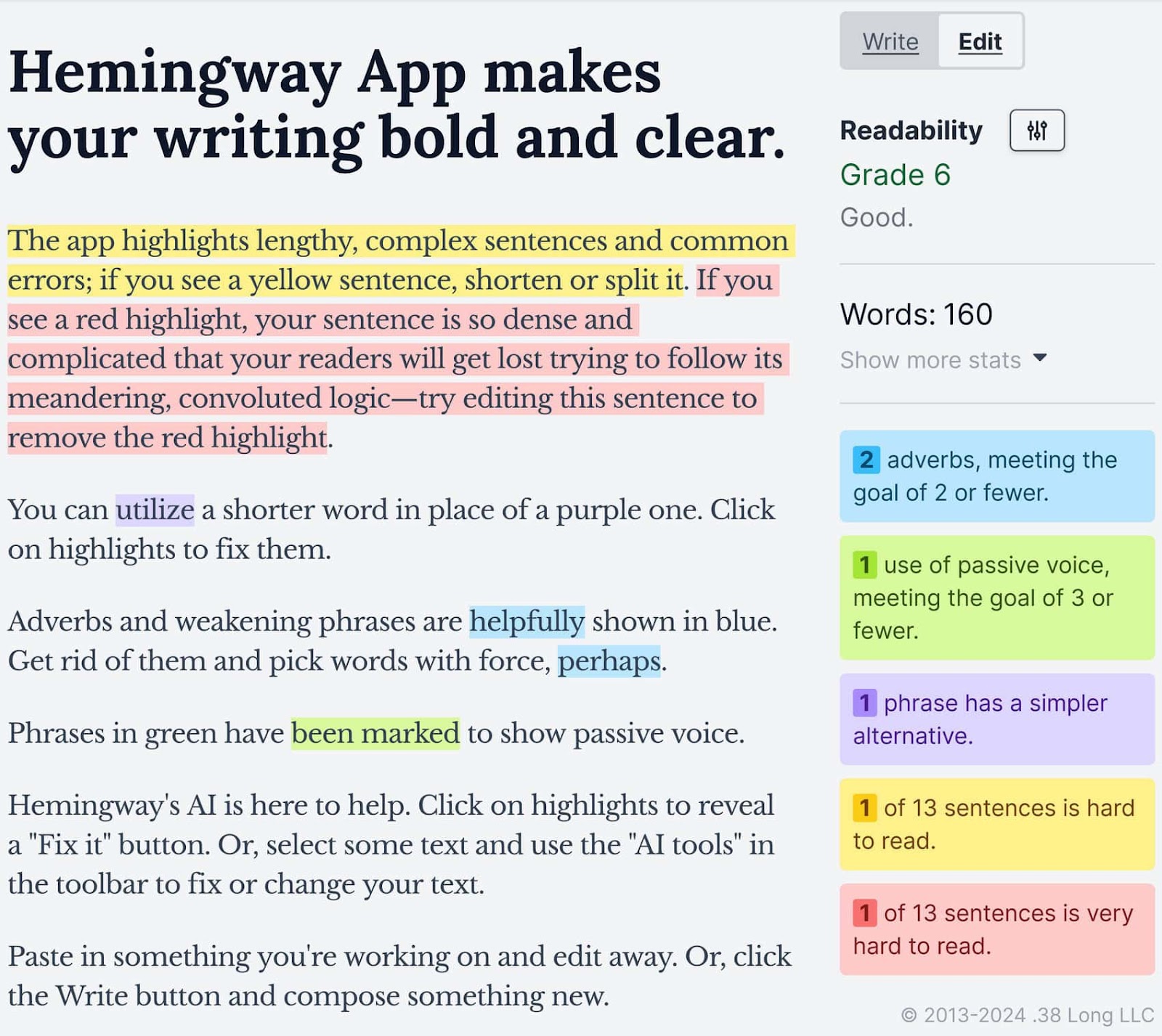
Additionally, have someone else review your work.
You can get it peer reviewed. Or hire a professional editor. Either way, a second set of eyes can help you catch mistakes you may have overlooked.
Further reading: 15 Best Writing & Editing Tools in 2024 (AI Tools Included)
10. Keep Your Content Up to Date
Outdated content is less relevant to users and search engines. And therefore less likely to generate sales, leads, or other business outcomes.
That’s why updating your content regularly and ensuring quality is important.
(This doesn’t apply to social platforms like Instagram or LinkedIn. Posts on these platforms tend to get buried in your feed, and users are less likely to return to them.)
Some topics have a longer lifespan than others. But decay impacts almost all types of content. Tracking content decay is important. Especially if you create blog posts.
Two reasons:
- Content freshness is important for Google. It’s a ranking factor for time-sensitive queries.
- You can easily improve a blog post without deleting it. This doesn’t apply to other types of content, like YouTube videos, social posts, podcasts, and more.
This is what the lifecycle of a standard blog post usually looks like:
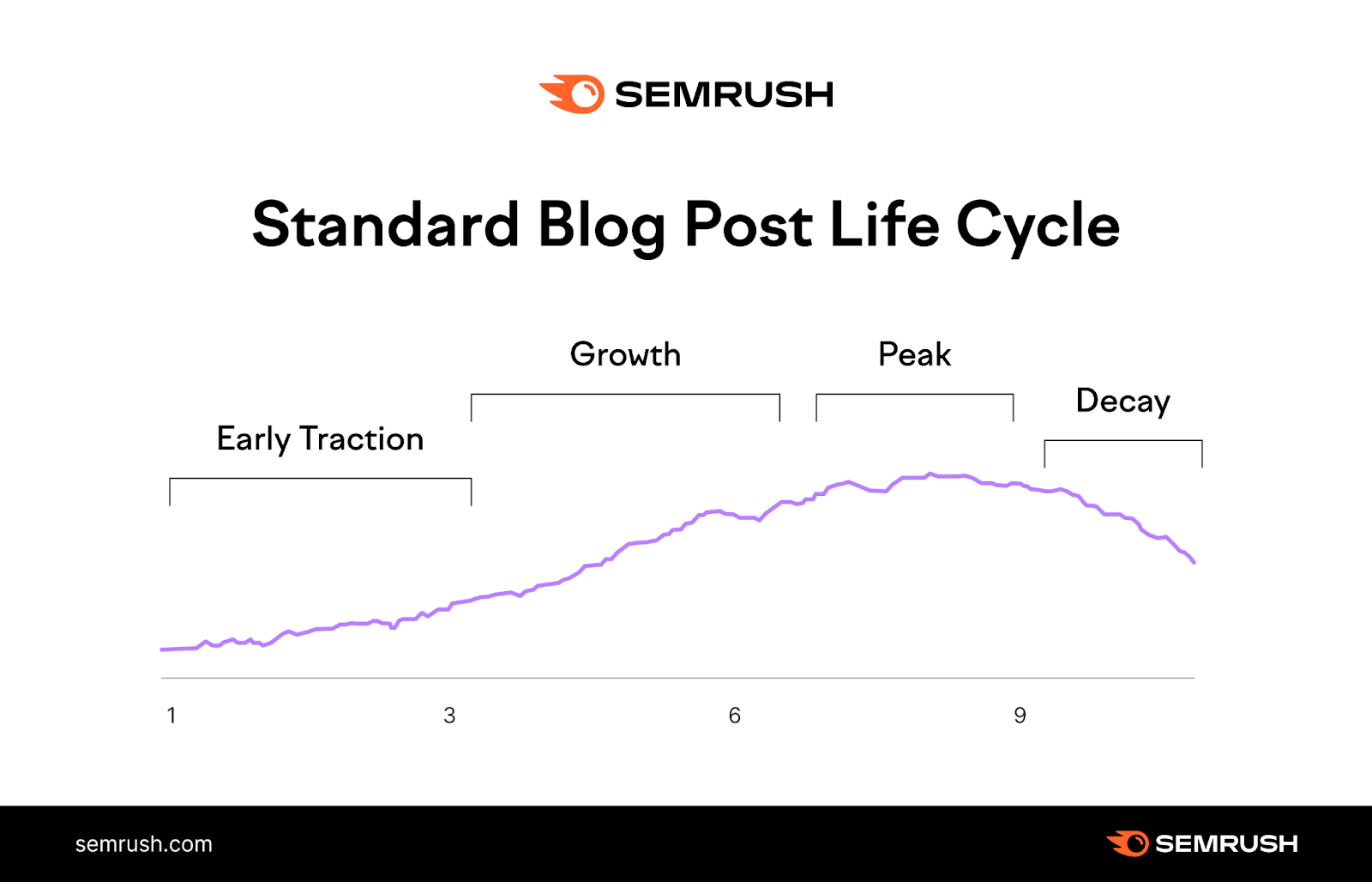
An example: Say you own a travel blog.
You publish an article listing the best insurance options for travelers visiting Japan. You include affiliate links so you get a commission each time a user buys insurance through your link.
A few weeks after you publish your article, Google ranks it at position 30.
After two months, position 15.
After eight months, it peaks: Google ranks it at position three. The article generates thousands of organic visits per month. You earn $400 per month from affiliate commissions.
But after a year, your article starts to become outdated. You haven’t updated the prices or added new insurance options. Google prioritizes other articles with more up-to-date information.
When content decay starts, you lose rankings and generate less traffic. Your related income decreases.
So, conduct content audits periodically. To identify and update your old (and outdated) content pieces.
According to our State of Content Marketing Report, 78% of businesses audit their content assets at least once a year.
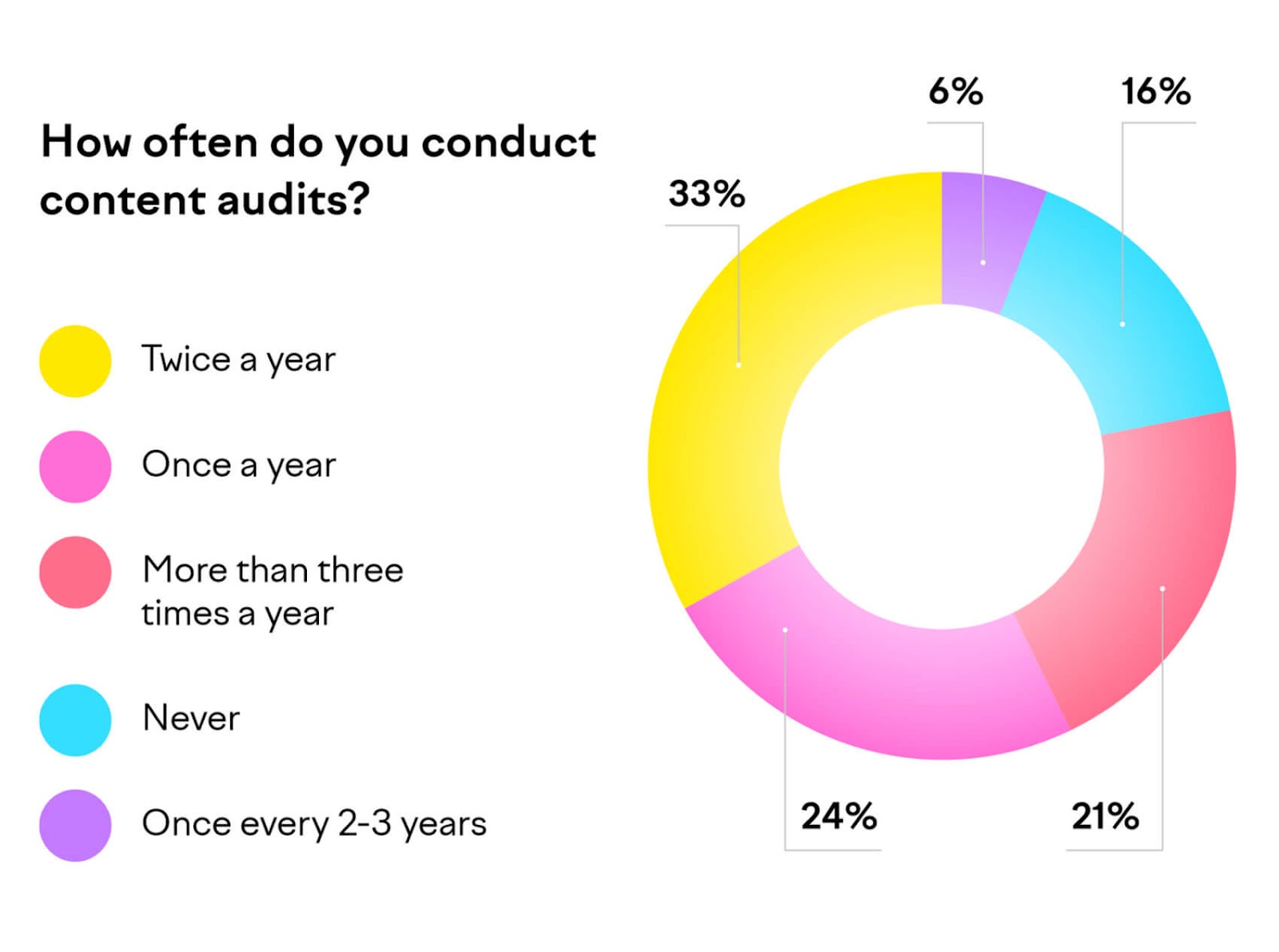
Read our comprehensive guide to content auditing to learn more.
Start Creating High-Quality Content
Creating high-quality content requires thoughtful planning, deep research, attention to detail, and a genuine intention to provide value to your readers.
Use the above tips as a checklist when creating new (or auditing existing) content. To increase its value and usability.
Take your content quality to the next level with Semrush’s research tools:
- Organic Research: Analyze your competitors' best-performing content. And use insights to improve your content strategy.
- Topic Research: Find relevant topics and questions to create customized content that resonates with your audience
Sign up for a free trial.
